Theoretical and Experimental Investigation of Temperature and Phase Transformation during SAW Overlaying
Abstract
1. Introduction
2. Experimental Padding Weld
3. Analytical Description of Temporary Temperature Distribution
4. The Concept of the Phase Share Calculation
5. Example of Computations
6. Results and Discussion
7. Conclusions
- Equations describing the temperature field in the semi-infinite model of the body were derived using the heat source model included the interaction of the electric arc, as well as the heat of weld reinforcement.
- Considering the heat transferred by the molten electrode material in the heat source model allows one to determine the temperature field with the distribution found in welding practice.
- This is confirmed by the fusion zone and HAZ shapes determined on the basis of calculations obtained for the source model defined in this way have been confirmed by experiments.
- The boundaries of individual heat influence zones determined in numerical calculations and experiments show satisfactory agreement.
- The results of metallographic studies confirmed the validity of the adopted assumptions and solutions.
Author Contributions
Funding
Conflicts of Interest
References
- Fassani, R.N.S.; Trevisan, O.V. Analytical modeling of multipass welding process with distributed heat source. J. Braz. Soc. Mech. Sci. Eng. 2003, 25, 302–305. [Google Scholar] [CrossRef]
- Fachinotti, V.D.; Anca, A.A.; Cardona, A. Analytical solutions of the thermal field induced by moving double-ellipsoidal and double elliptical heat sources in a semi-infinite body. Int. J. Num. Meth. Biomech. Eng. 2011, 27, 595–607. [Google Scholar] [CrossRef]
- Ghosh, A.; Barman, N.; Chattopadhyay, H.; Hloch, S. A study of thermal behaviour during submerged arc welding. Stroj. Vest. J. Mech. Eng. 2013, 59, 333–338. [Google Scholar] [CrossRef]
- Antonakakis, T.; Maglioni, C.; Vlachoudis, V. Closed form solutions of the heat diffusion equation with Gaussian source. Int. J. Heat Mass Transf. 2013, 62, 314–322. [Google Scholar] [CrossRef]
- Franco, A.; Romoli, L.; Musacchio, A. Modelling for predicting seam geometry in laser beam welding of stainless steel. Int. J. Therm. Sci. 2014, 79, 194–205. [Google Scholar] [CrossRef]
- Salimi, S.; Bahemmat, P.; Haghpanahi, M. A 3D transient analytical solution to the temperature field during dissimilar welding processes. Int. J. Mechn. Sci. 2014, 79, 66–74. [Google Scholar] [CrossRef]
- Lindgren, L.E. Numerical modelling of welding. Comput. Methods Appl. Mech. Eng. 2006, 195, 6710–6736. [Google Scholar] [CrossRef]
- Joshi, S.; Semetay, C.; Price, J.W.H.; Nied, H.F. Weld-induced residual stresses in a prototype dragline cluster and comparison with design codes. Thin-Walled Struct. 2010, 48, 89–102. [Google Scholar] [CrossRef]
- Hildebrand, J.; Starcevic, I.; Werner, F.; Heinemann, H.; Köhler, G. Numerical simulation of TIG-dressing of welded joints. In Proceedings of the Joint International Conference on Computing and Decision Making in Civil and Building Engineering, Montreal, QC, Canada, 14–16 June 2006; pp. 1487–1496. [Google Scholar]
- Mahapatra, M.M.; Datta, G.L.; Pradhan, B. Three-dimensional finite element analysis to predict the effects of shielded metal arc welding process parameters on temperature distributions and weldment zones in butt and one-sided fillet welds. Proc. Inst. Mech. Eng. Part B J. Eng. Manuf. 2006, 220, 837–845. [Google Scholar] [CrossRef]
- Joshi, S.; Hildebrand, J.; Aloraier, A.S.; Rabczuk, T. Characterization of material properties and heat source parameters in welding simulation of two overlapping beads on a substrate plate. Comput. Mater. Sci. 2013, 69, 559–565. [Google Scholar] [CrossRef]
- Piekarska, W.; Kubiak, M. Three-dimensional model for numerical analysis of thermal phenomena in laser-arc hybrid welding process. Int. J. Heat Mass Transf. 2011, 54, 4966–4974. [Google Scholar] [CrossRef]
- Moarrefzadeh, A. Numerical simulation of workpiece thermal profile in Plasma Arc Cutting (PAC) Process. WSEAS Trans. Appl. Theor. Mech. 2011, 6, 160–166. [Google Scholar]
- Chen, Y.; He, Y.; Chen, H.; Zhang, H.; Che, S. Effect of weave frequency and amplitude on temperature field in weaving welding process. Int. J. Adv. Manuf. Technol. 2014, 75, 803–813. [Google Scholar] [CrossRef]
- Sarkar, A.; Datta, A.; Dey, P.; Rai, R.N.; Saha, S.C. A numerical approach for modelling thermal profiles and effects of process parameters on it in submerged arc welding of AISI 1518 grade steel. J. Therm. Eng. 2015, 1, 505–516. [Google Scholar] [CrossRef]
- Nezamdost, M.R.; Nekonie Esfahani, M.R.; Hashemi, S.H.; Mirbozorgi, S.A. Investigation of temperature and residual stresses field of submerged arc welding by finite element method and experiment. Int. J. Adv. Manuf. Technol. 2016, 87, 615–624. [Google Scholar] [CrossRef]
- Górka, J. Assessment of steel subjected to the thermomechanical control process with respect to weldability. Metals 2018, 8, 169. [Google Scholar] [CrossRef]
- Ghoreishi, R.; Roohi, A.H. Analysis of the influence of cutting parameters on surface roughness and cutting forces in high speed face milling of Al/SiC MMC. Mater. Res. Express 2018, 5. [Google Scholar] [CrossRef]
- Urbikain, G.; Perez, J.M.; López de Lacall, L.N.; Andueza, A. Combination of friction drilling and form tapping processes on dissimilar materials for making nutless joints. Proc. Inst. Mech. Eng. Part B J. Eng. Manuf. 2016, 232, 1007–1020. [Google Scholar] [CrossRef]
- Świerczyńska, A.; Fydrych, D.; Rogalski, G. Diffusible hydrogen management in underwater wet self-shielded flux cored arc welding. Int. J. Hydrogen Energ. 2017, 42, 24532–24540. [Google Scholar] [CrossRef]
- Wang, X.; Wang, J.; Gao, Z.; Xia, D.H.; Hu, W. Tempering effects on the microstructure and properties of submerged arc surfacing layers of H13 steel. J. Mater. Process. Technol. 2019, 269, 26–34. [Google Scholar] [CrossRef]
- Selvabharathi, R. Effect of post weld heat treatment and TiAlSiN coating on the tensile strength of autogenous plasma arc welding of duplex/ super austenitic stainless steels. J. Manuf. Process. 2019, 38, 135–147. [Google Scholar] [CrossRef]
- Barbosa, L.H.S.; Modenesi, P.J.; Godefroid, L.B.; Arias, A.R. Fatigue crack growth rates on the weld metal of high heat input submerged arc welding. Int. J. Fatigue 2019, 119, 43–51. [Google Scholar] [CrossRef]
- Ghadikolaei, A.D.; Ibrahim, H.; Amerinatanzi, A.; Hashemi, M.; Moghaddam, N.S.; Elahinia, M. Improving corrosion resistance of additively manufactured nickel–titanium biomedical devices by micro-arc oxidation process. J. Mater. Sci. 2019, 54, 7333–7355. [Google Scholar]
- Kim, N.H.; Gil, W.; Lim, H.D.; Choi, C.H.; Lee, H.W. Variation of mechanical properties and corrosion properties with Mo contents of Hyper Duplex Stainless-Steel welds. Met. Mater. Int. 2019, 25, 193–206. [Google Scholar] [CrossRef]
- Rosenthal, D. Mathematical theory of heat distribution during welding and cutting. Weld. J. 1941, 20, 220s–234s. [Google Scholar]
- Rykalin, N. Fundamentals of Heat Flow in Welding; AN SSSR: Moscow, Russia, 1947. [Google Scholar]
- Eagar, T.W.; Tsai, N.S. Temperature fields produced by travelling distributed heat sources. Weld. J. 1983, 62, 346s–355s. [Google Scholar]
- Goldak, J.; Chakravarti, A.; Bibby, M. A new finite element model for welding heat sources. Metall. Mater. Trans. B 1984, 15, 299–305. [Google Scholar]
- Jeong, S.K.; Cho, H.S. An analytical solution to predict the transient temperature distribution in fillet arc welds. Weld. J. 1997, 76, 223s–232s. [Google Scholar]
- Nguyen, N.T.; Matsuoka, K.; Suzuki, N.; Maeda, Y. Analytical solutions for transient temperature of semi-infinite body subjected to 3-D moving heat sources. Weld. J. 1999, 78, 265s–274s. [Google Scholar]
- Gu, Y.; Li, Y.D.; Yong, Y.; Xu, F.L.; Su, L.F. Determination of parameters of double-ellipsoidal heat source model based on optimization method. Weld. World 2009. [Google Scholar] [CrossRef]
- Wu, C.S.; Hu, Q.X.; Gao, J.Q. An adaptive heat source model for finite-element analysis of keyhole plasma arc welding. Comput. Mater. Sci. 2009, 46, 167–172. [Google Scholar] [CrossRef]
- Jia, X.; Xu, J.; Liu, Z.; Huang, S.; Fan, Y.; Sun, Z. A new method to estimate heat source parameters in gas metal arc welding simulation process. Fusion Eng. Des. 2014, 89, 40–48. [Google Scholar] [CrossRef]
- Mikami, Y.; Nakamura, T.; Mochizuki, M. Numerical investigation of the influence of heat source modeling on simulated residual stress distribution in weaving welds. Weld. World 2016, 60, 41–49. [Google Scholar] [CrossRef]
- Flint, T.F.; Francis, J.A.; Smith, M.C.; Balakrishnan, J. Extension of the double-ellipsoidal heat source model to narrow-groove and keyhole weld configurations. J. Mater. Process. Technol. 2017, 246, 123–135. [Google Scholar] [CrossRef]
- Nasiri, M.; Enzinger, N. An analytical solution for temperature distribution in fillet arc welding based on an adaptive function. Weld. World 2018, 1–11. [Google Scholar] [CrossRef]
- Lv, C.; Wang, G.; Chen, H.; Wan, S. Estimation of the moving heat source intensity using the multiple model adaptive inverse method. Int. J. Therm. Sci. 2019, 138, 576–585. [Google Scholar] [CrossRef]
- Jeong, S.K.; Cho, H.S. An analytical solution for transient temperature distribution in fillet arc welding including the effect of molten metal. Proc. Inst. Mech. Eng. 1997, 211, 63–72. [Google Scholar] [CrossRef]
- Kang, S.H.; Cho, H.S. Analytical solution for transient temperature distribution in gas tungsten arc welding with consideration of filler wire. Proc. Inst. Mech. Eng. 1999, 213, 799–811. [Google Scholar] [CrossRef]
- PN-EN ISO 636:2016-02, Welding Consumables—Rods, Wires and Weld Metal for Welding with a Tungsten Electrode in the Inert Gas of Unalloyed Steels and Fine-Grained—Classification; Polish Committee for Standarization: Warszawa, Poland, 2016.
- Winczek, J. New approach to modeling of temperature field in surfaced steel elements. Int. J. Heat Mass Transf. 2011, 54, 4702–4709. [Google Scholar] [CrossRef]
- Winczek, J. Analytical solution to transient temperature field in a half-infinite body caused by moving volumetric heat source. Int. J. Heat Mass Transf. 2010, 53, 5774–5781. [Google Scholar] [CrossRef]
- Vishnu, P.R.; Li, W.B.; Easterling, K.E. Heat-flow model for pulsed welding. Mater. Sci. Technol. 1991, 7, 649–659. [Google Scholar] [CrossRef]
- Modenesi, P.J.; Reis, R.I. A model for melting rate phenomena in GMA welding. J. Mater. Process. Technol. 2007, 189, 199–205. [Google Scholar] [CrossRef]
- Avrami, M. Kinetics of phase change. I. General theory. J. Chem. Phys. 1939, 7, 1103–1112. [Google Scholar] [CrossRef]
- Piekarska, W.; Kubiak, M.; Saternus, Z. Numerical simulation of thermal phenomena and phase transformations in laser-arc hybrid welded joints. Arch. Metall. Mater. 2011, 56, 409–421. [Google Scholar] [CrossRef]
- Piekarska, W.; Goszczyńska, D.; Saternus, Z. Application of analytical methods for predicting the structures of steel phase transformations in welded joints. J. Appl. Math. Comput. Mech. 2015, 14, 61–72. [Google Scholar] [CrossRef][Green Version]
- Winczek, J.; Makles, K.; Gucwa, M.; Gnatowska, R.; Hatala, M. Modelling of strains during SAW surfacing taking into heat of the weld in temperature field description and phase transformations. IOP Conf. Ser. Mater. Sci. Eng. 2017, 225, 012038. [Google Scholar] [CrossRef]
- Domański, T.; Bokota, A. Numerical models of hardening phenomena of tools steel base on the TTT and CCT diagrams. Arch. Metal. Mater. 2011, 56, 325–344. [Google Scholar] [CrossRef]
- Piekarska, W.; Kubiak, M. Theoretical investigation into heat transfer in laser-welded steel sheets. J. Therm. Anal. Calorim. 2012, 10, 159–166. [Google Scholar] [CrossRef]
- Elmer, J.W.; Palmer, T.A.; Zhang, W.; Wood, B.; DebRoy, T. Kinetic modeling of phase transformations occurring in the HAZ of C-Mn welds based on direct observations. Acta Mater. 2003, 51, 3333–3349. [Google Scholar] [CrossRef]
- Brózda, J.; Pilarczyk, J.; Zeman, M. TTT-Welding Diagrams Transformation of Austenite, 1st ed.; Śląsk: Katowice, Poland, 1983; pp. 32–33. [Google Scholar]
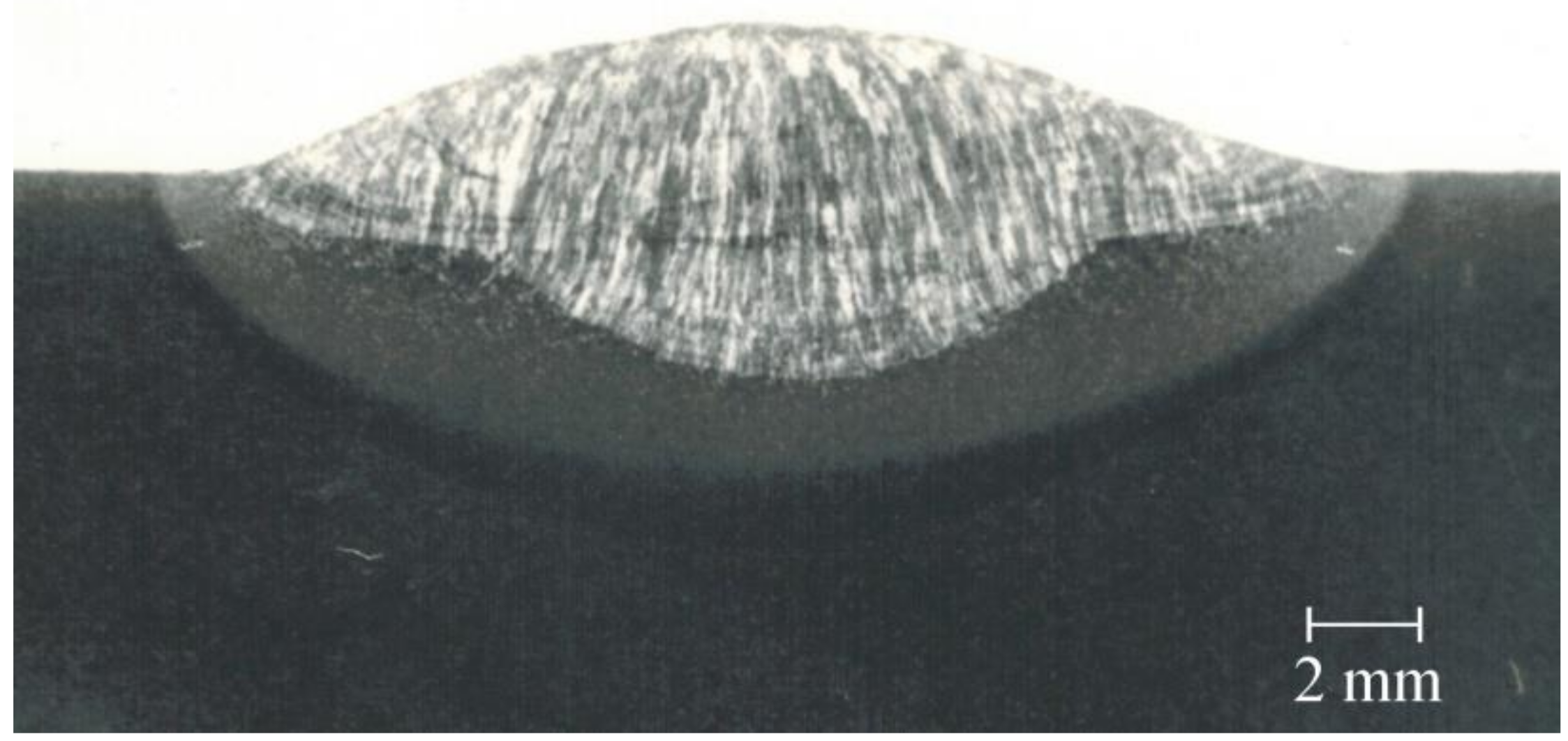


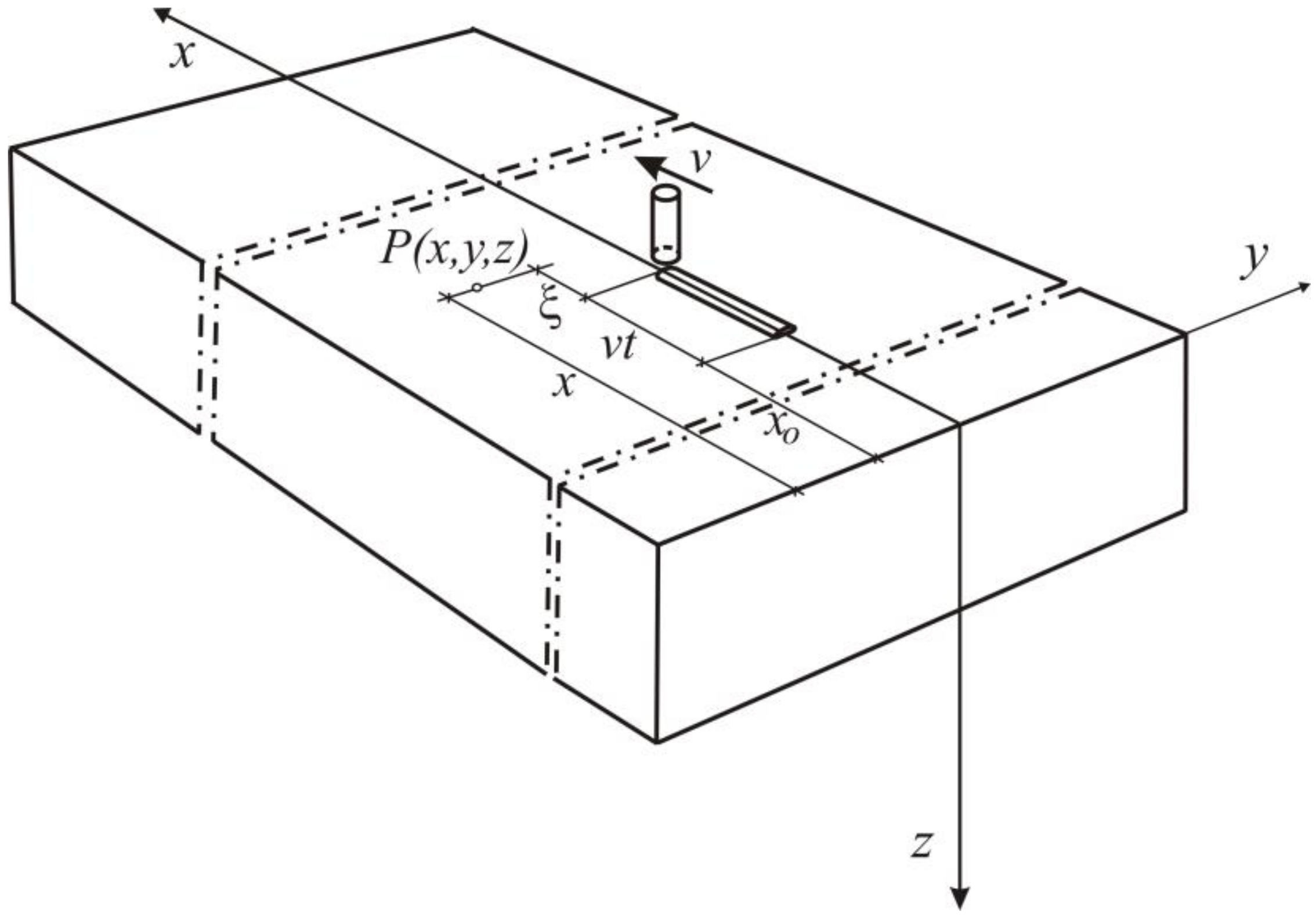
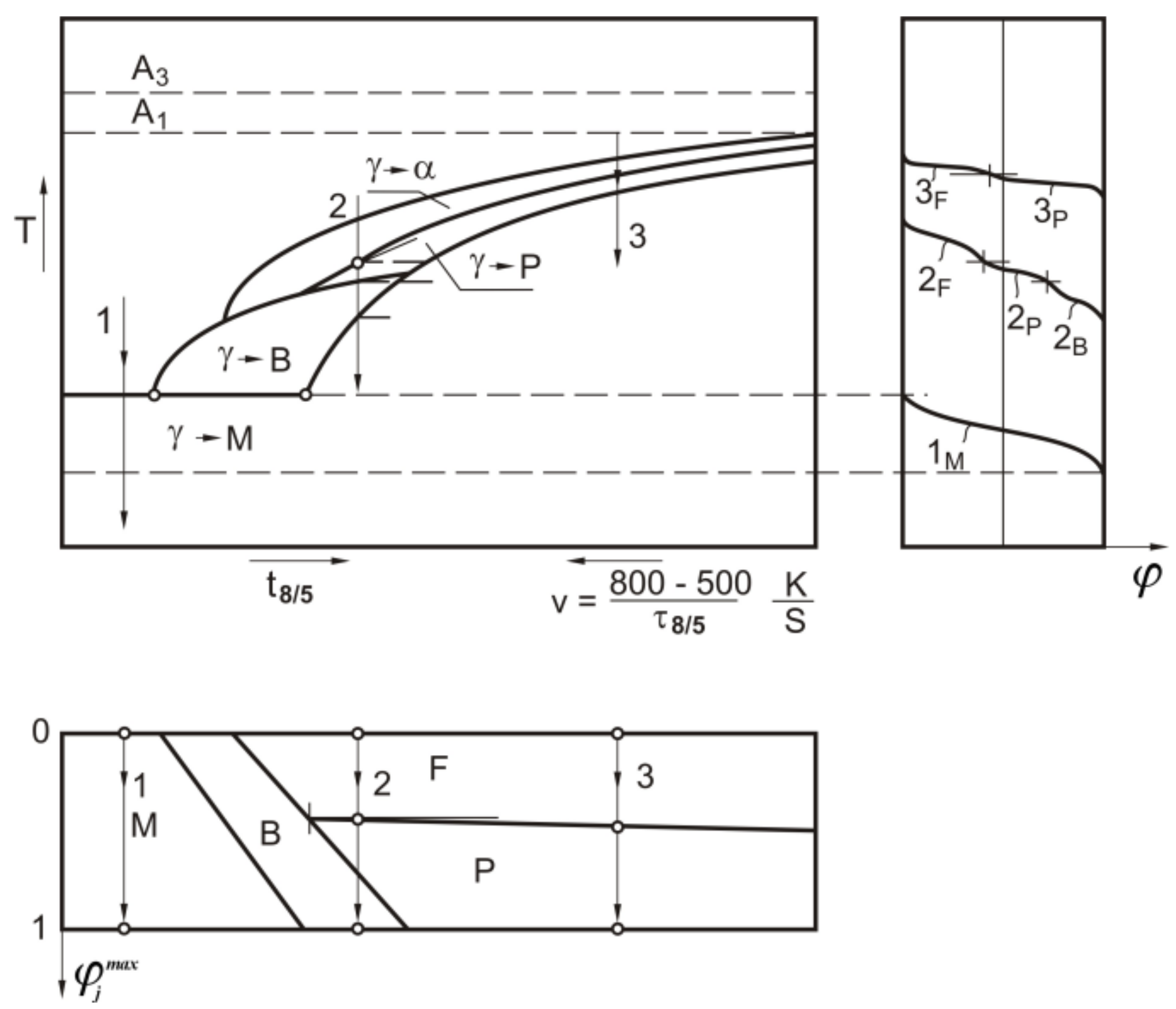

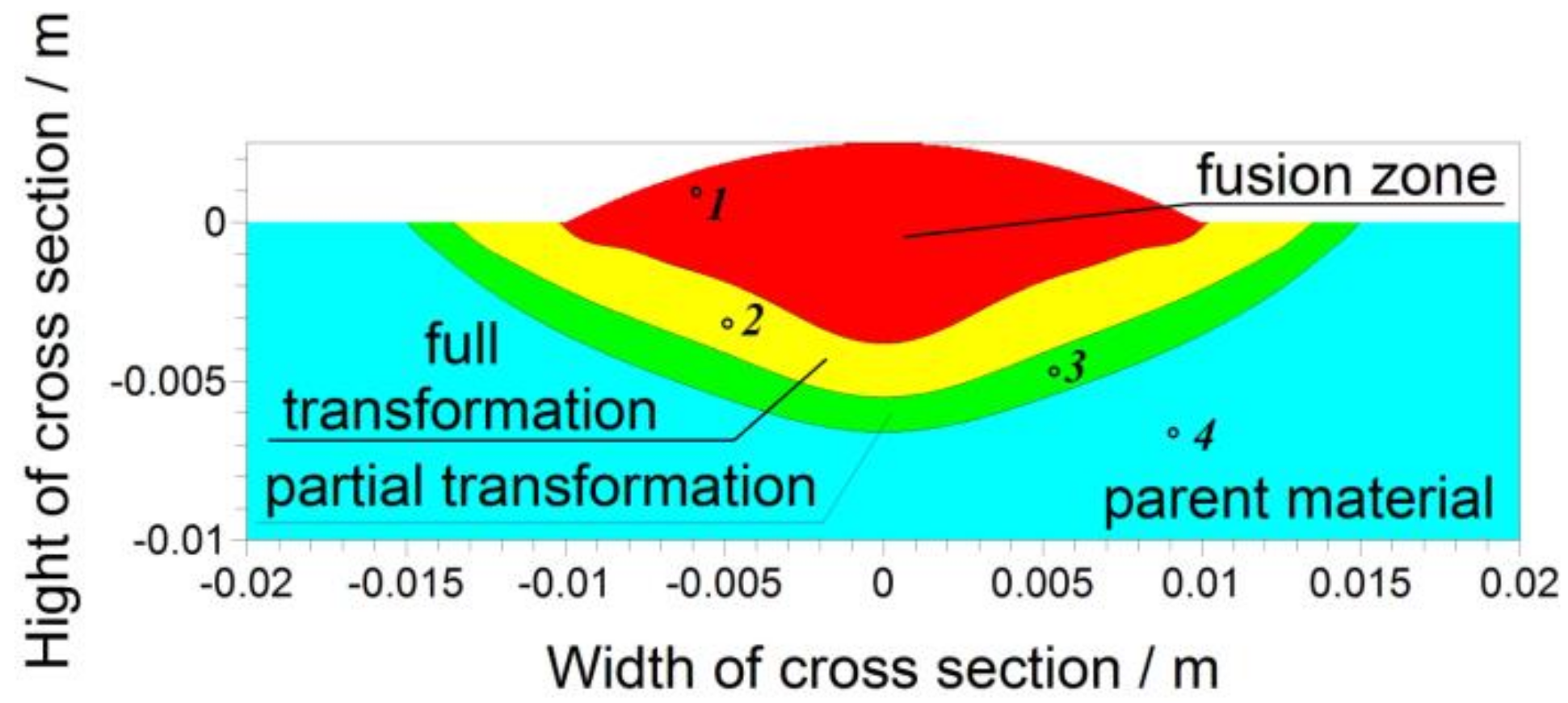
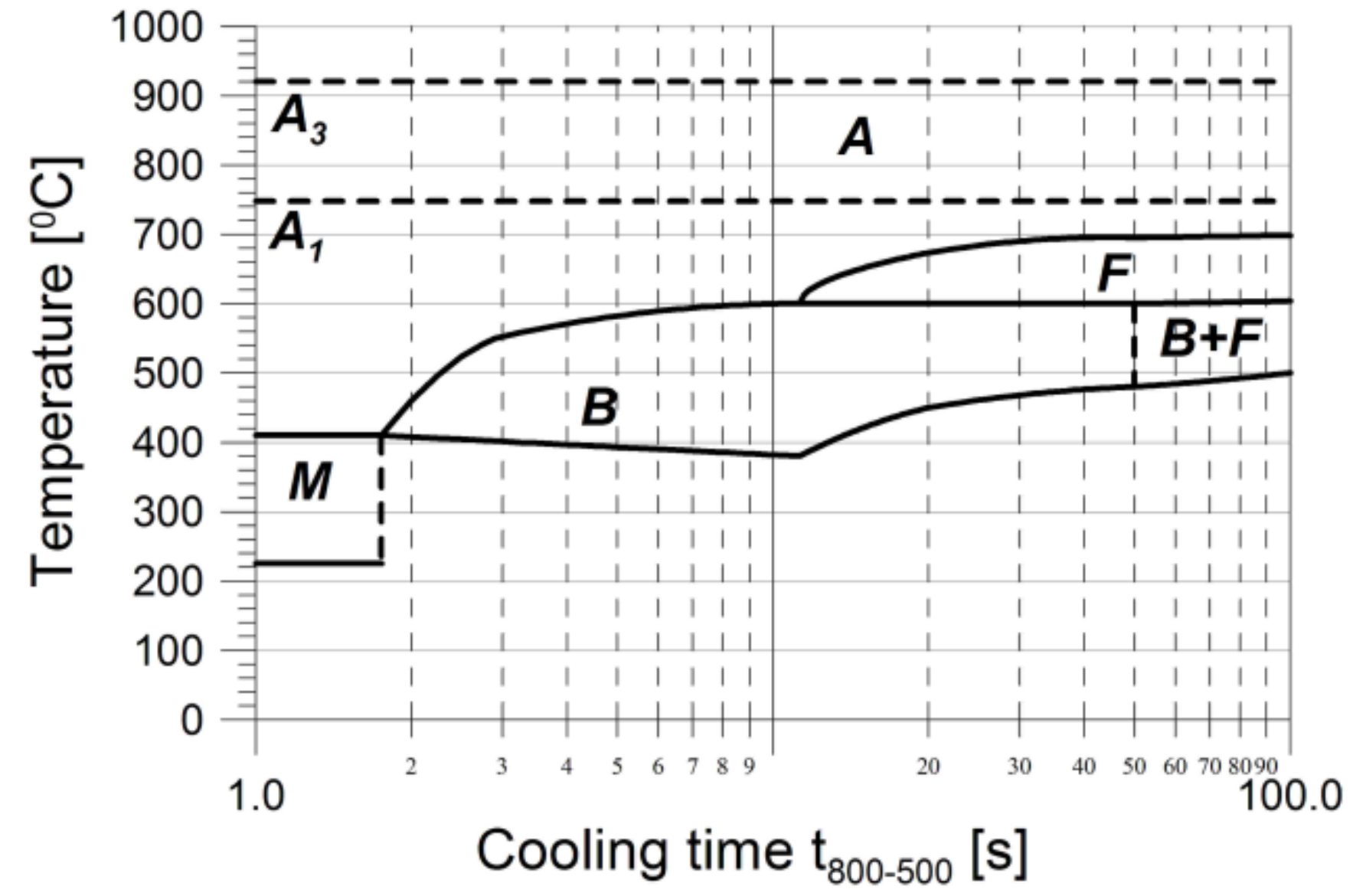

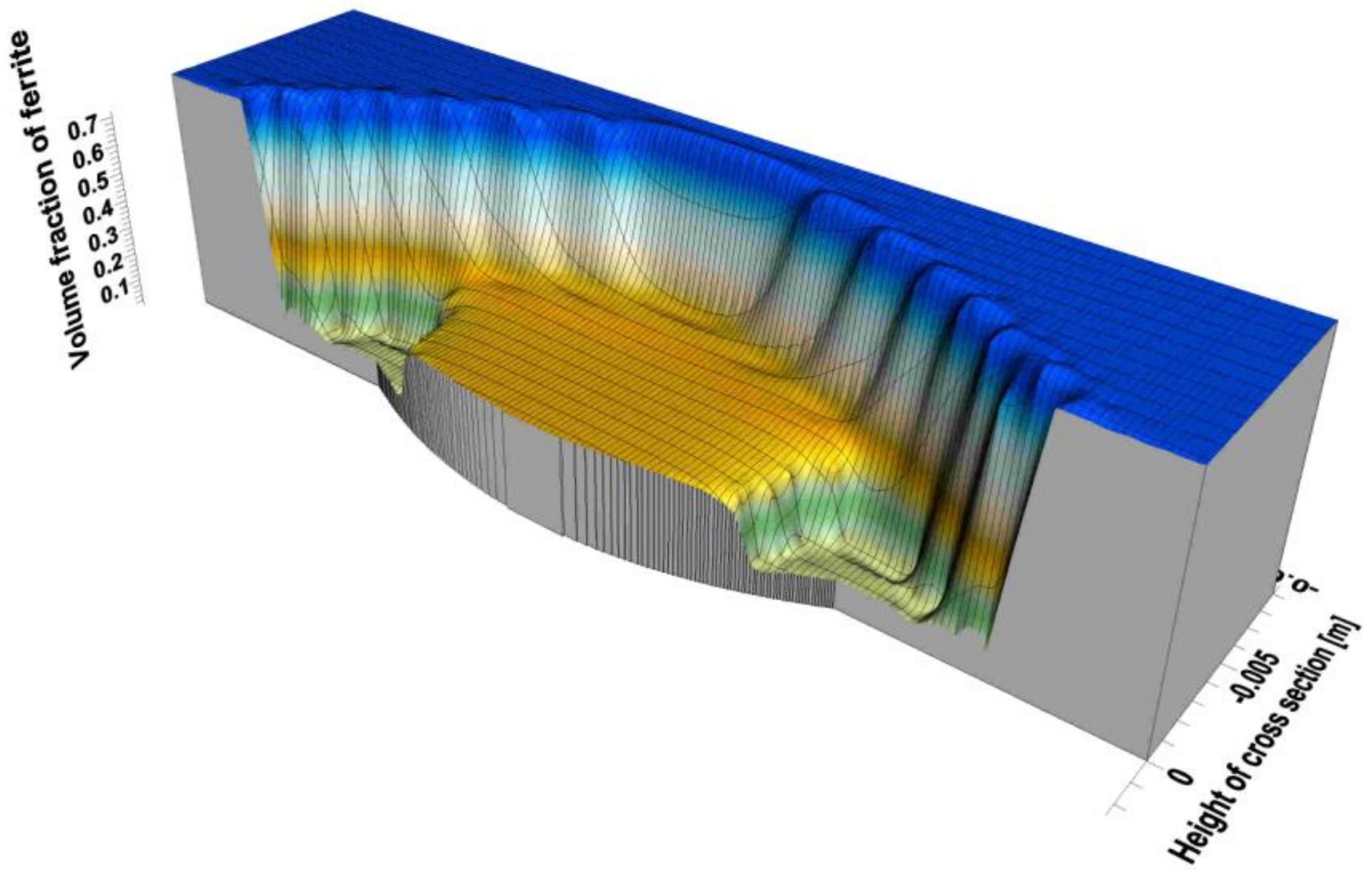
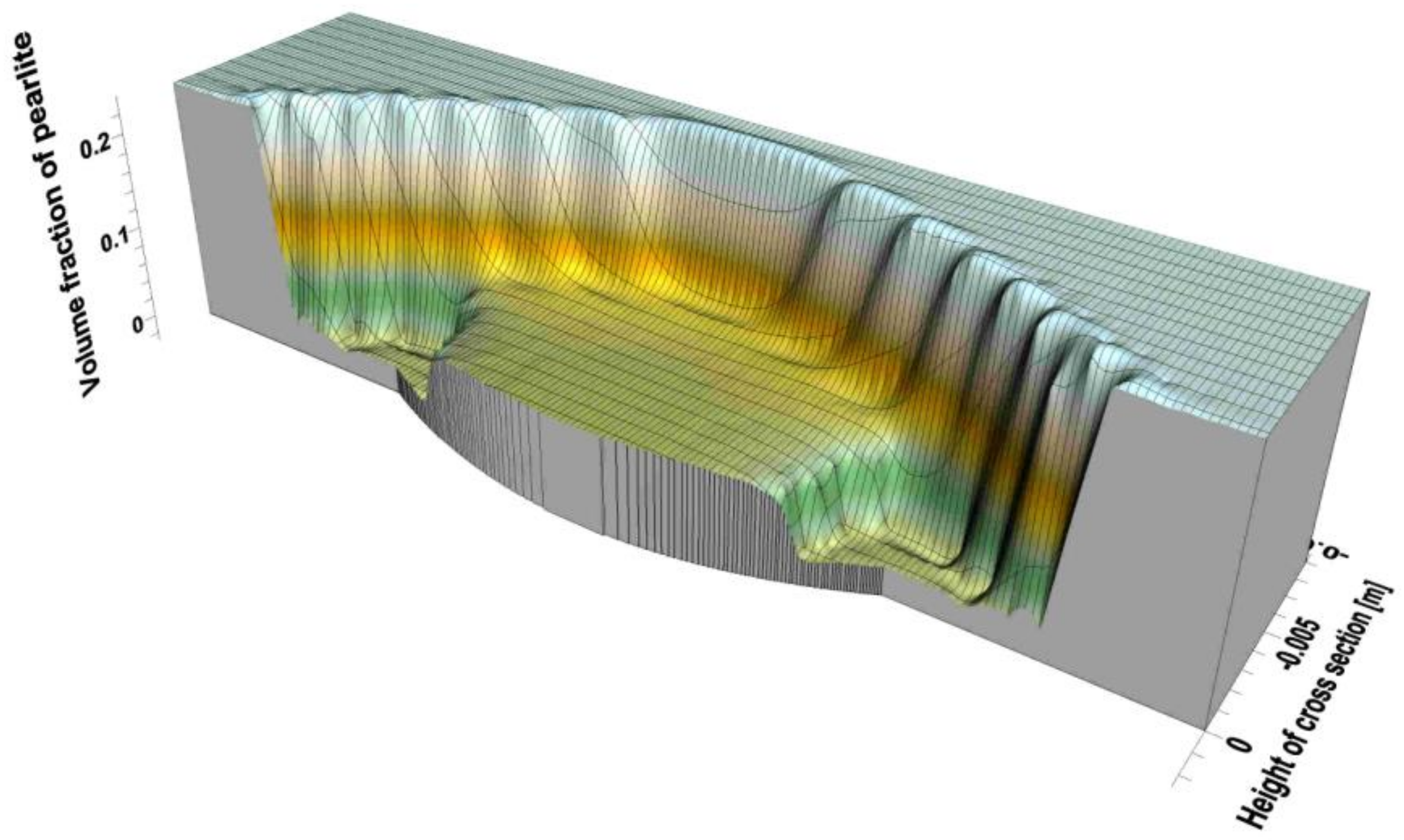
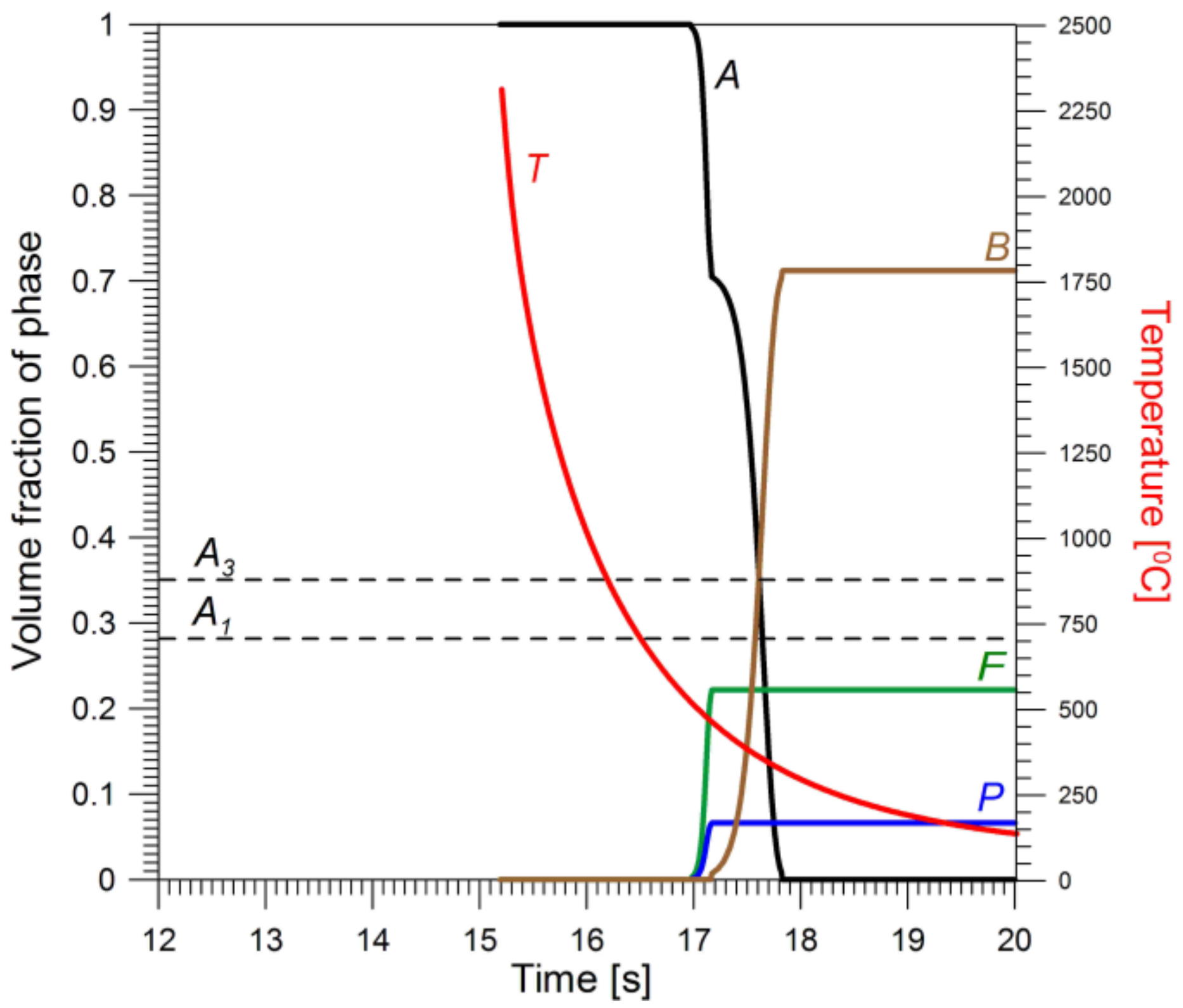

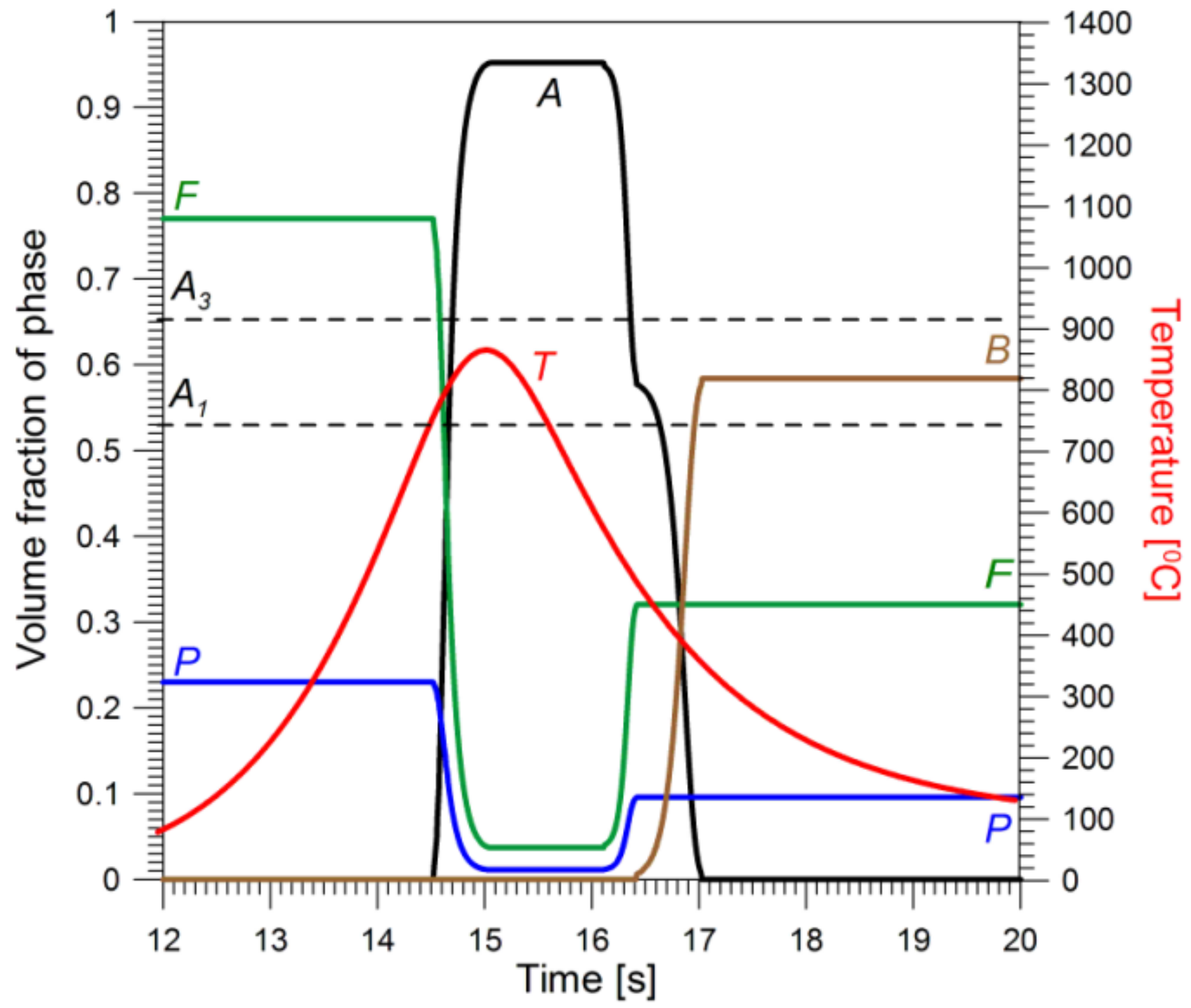
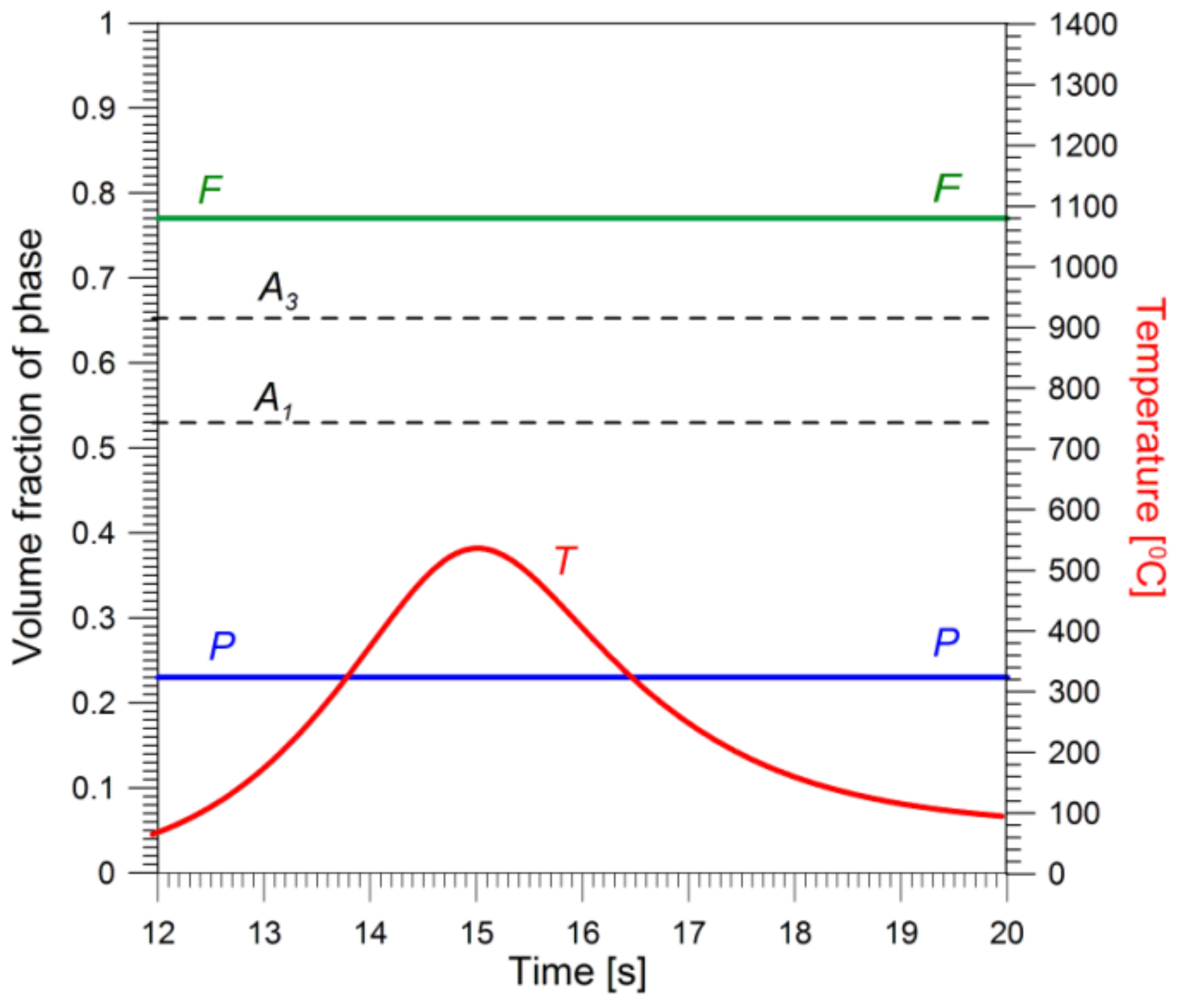

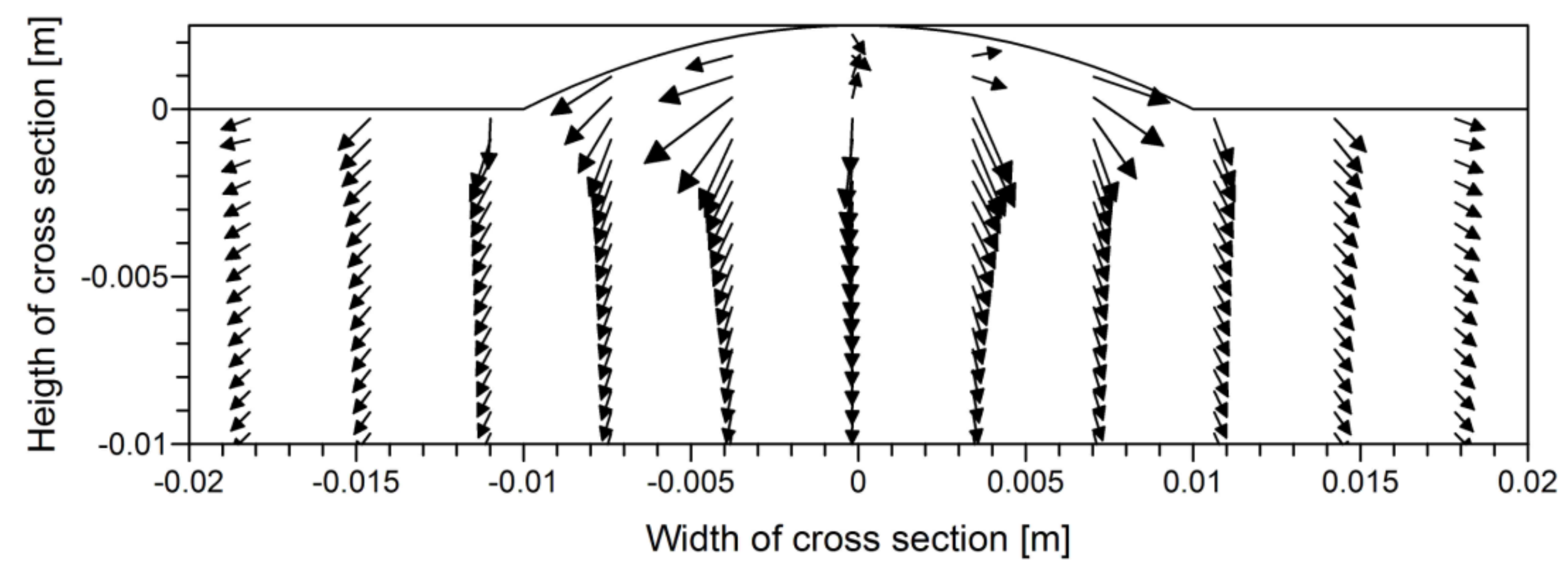

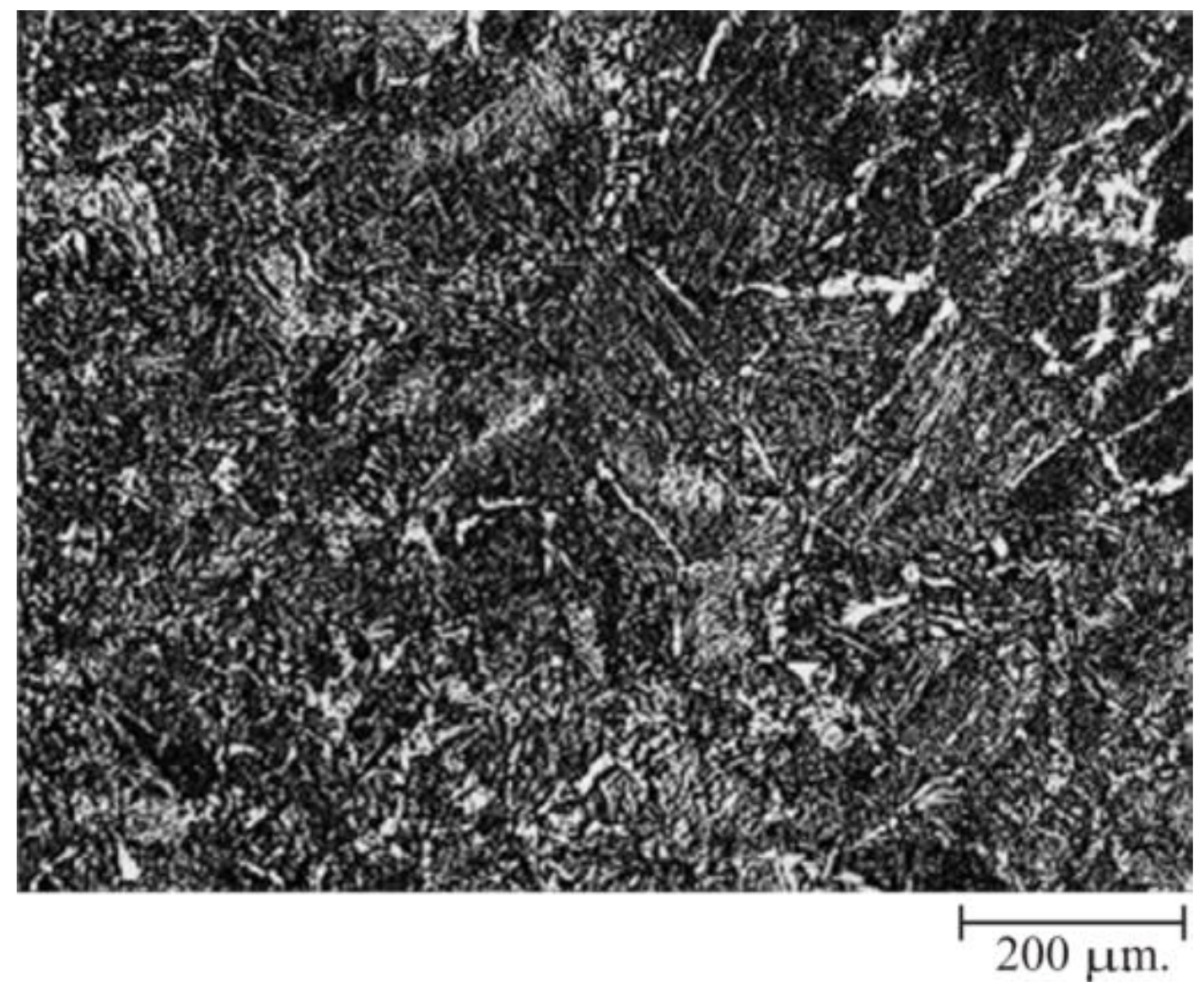
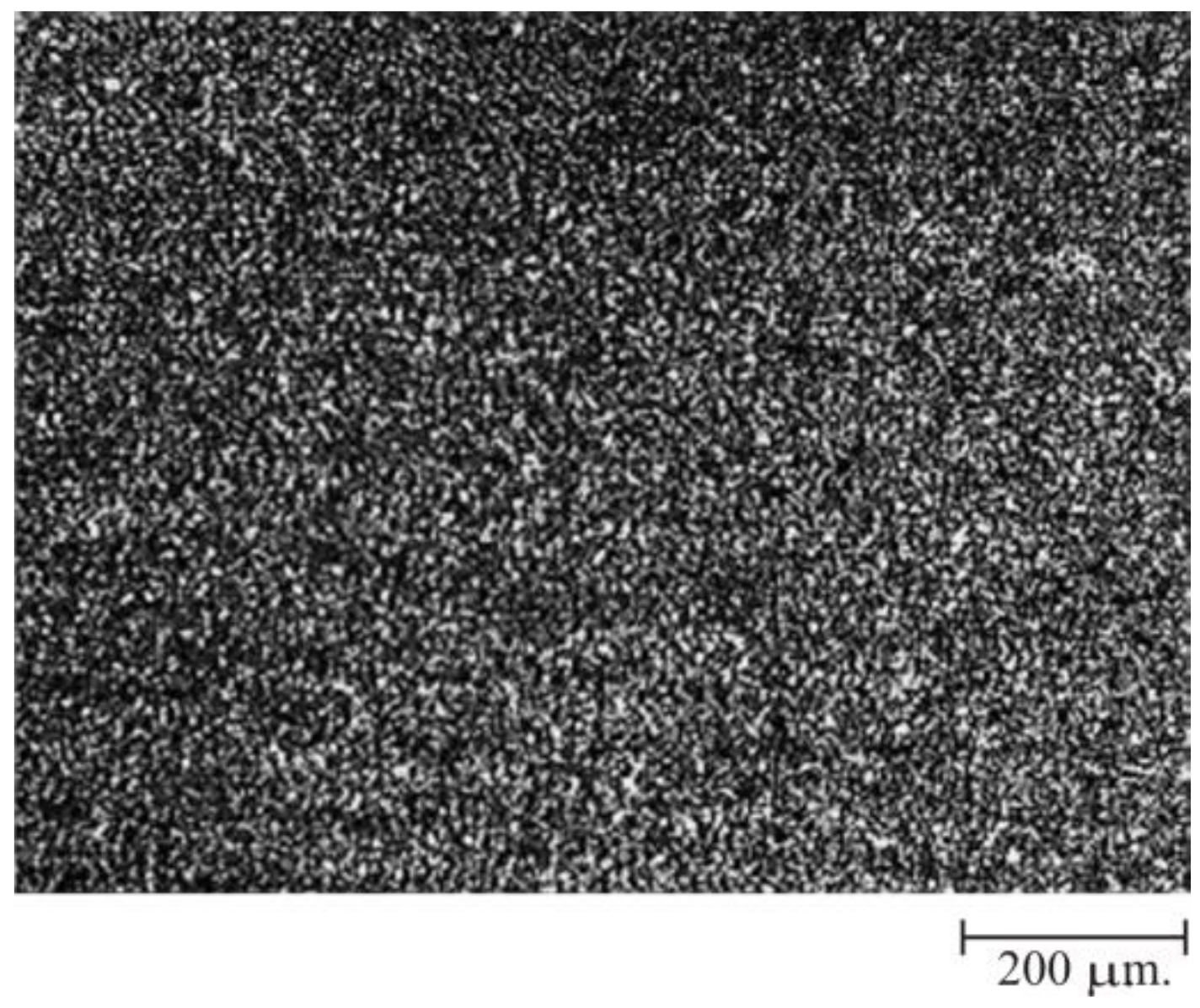
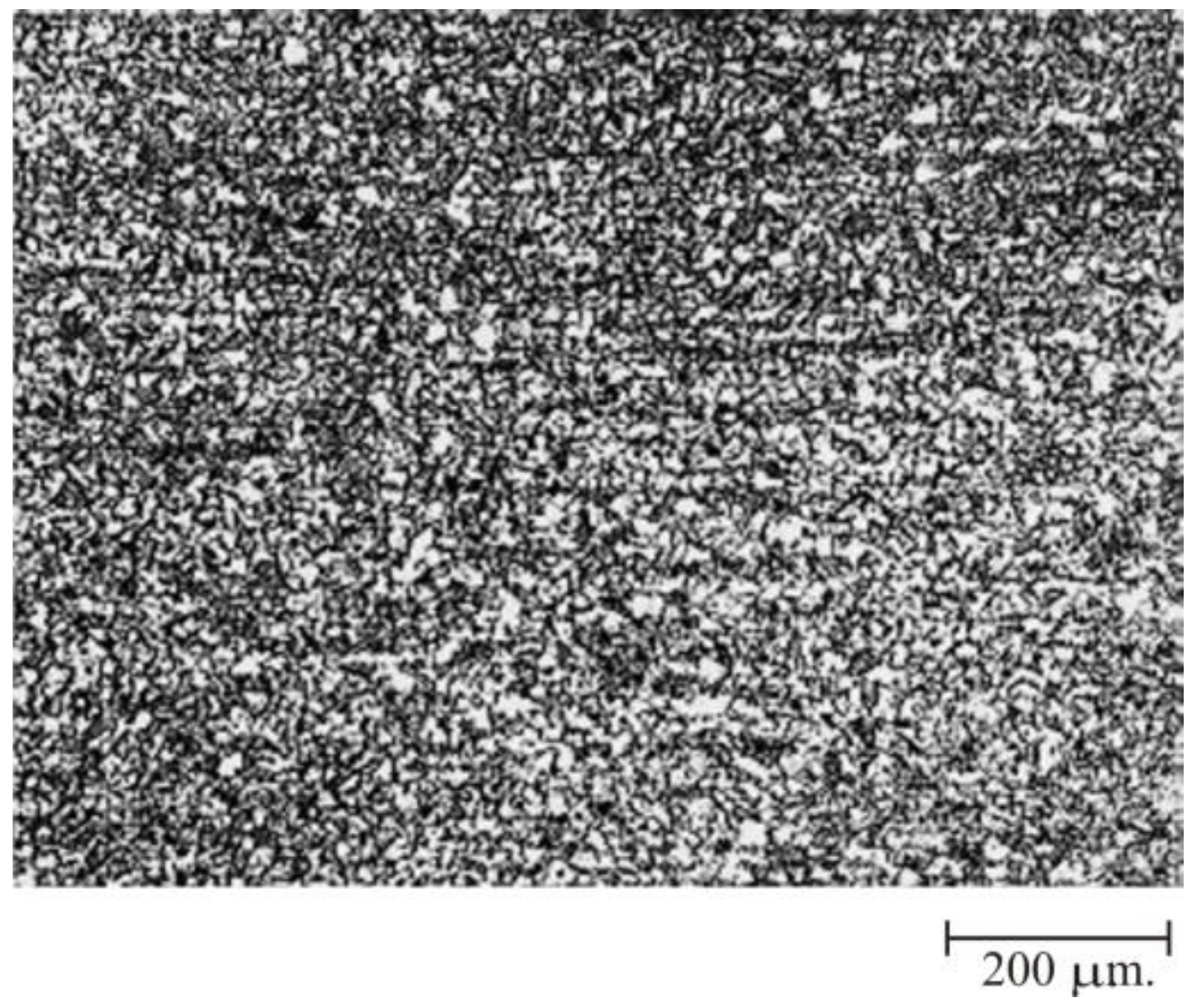
| Chemical Component Share (wt%) | ||||||||||
|---|---|---|---|---|---|---|---|---|---|---|
| C | Mn | Si | P | S | Al | Cr | Ni | Mo | V | Nb |
| 0.18 | 1.42 | 0.40 | 0.018 | 0.032 | 0.050 | - | - | - | - | - |
© 2019 by the authors. Licensee MDPI, Basel, Switzerland. This article is an open access article distributed under the terms and conditions of the Creative Commons Attribution (CC BY) license (http://creativecommons.org/licenses/by/4.0/).
Share and Cite
Winczek, J.; Gawronska, E.; Gucwa, M.; Sczygiol, N. Theoretical and Experimental Investigation of Temperature and Phase Transformation during SAW Overlaying. Appl. Sci. 2019, 9, 1472. https://doi.org/10.3390/app9071472
Winczek J, Gawronska E, Gucwa M, Sczygiol N. Theoretical and Experimental Investigation of Temperature and Phase Transformation during SAW Overlaying. Applied Sciences. 2019; 9(7):1472. https://doi.org/10.3390/app9071472
Chicago/Turabian StyleWinczek, Jerzy, Elzbieta Gawronska, Marek Gucwa, and Norbert Sczygiol. 2019. "Theoretical and Experimental Investigation of Temperature and Phase Transformation during SAW Overlaying" Applied Sciences 9, no. 7: 1472. https://doi.org/10.3390/app9071472
APA StyleWinczek, J., Gawronska, E., Gucwa, M., & Sczygiol, N. (2019). Theoretical and Experimental Investigation of Temperature and Phase Transformation during SAW Overlaying. Applied Sciences, 9(7), 1472. https://doi.org/10.3390/app9071472






